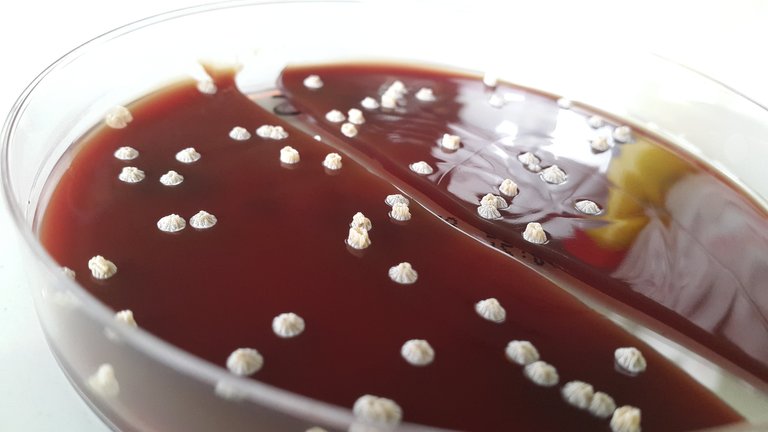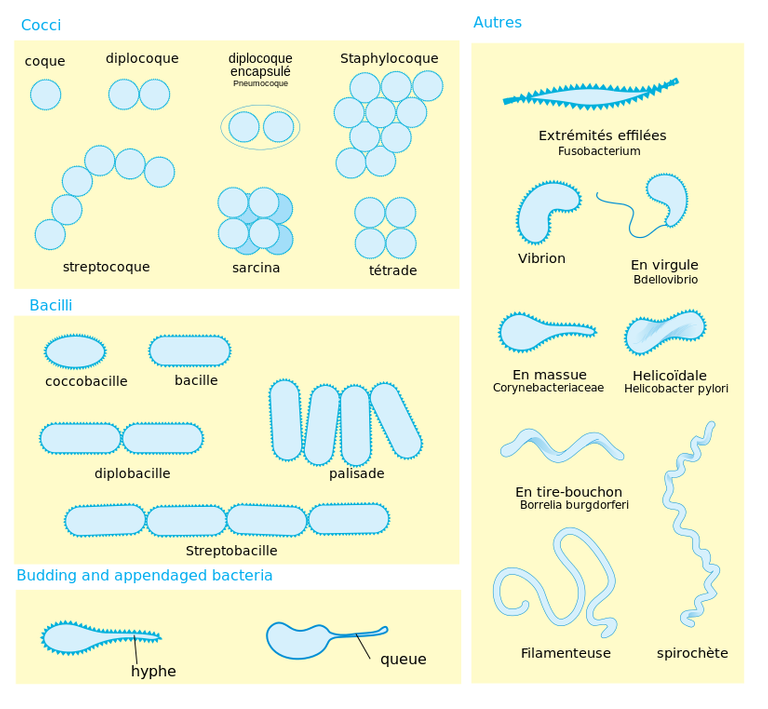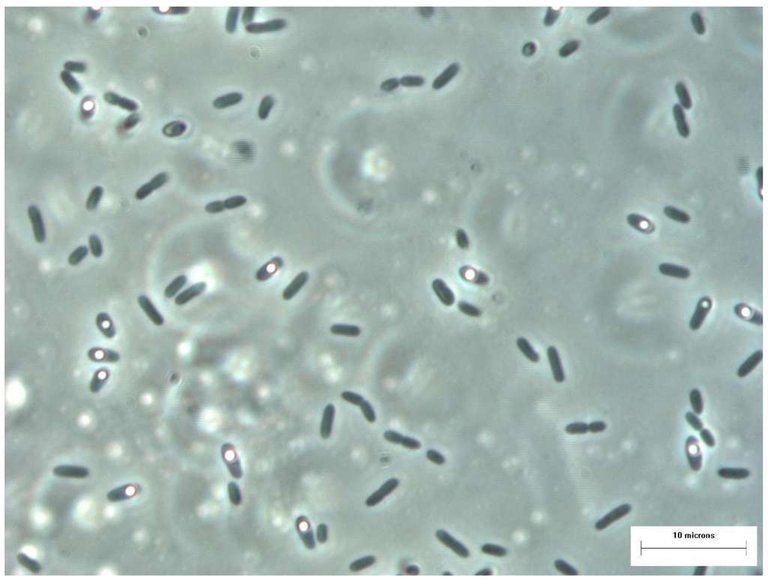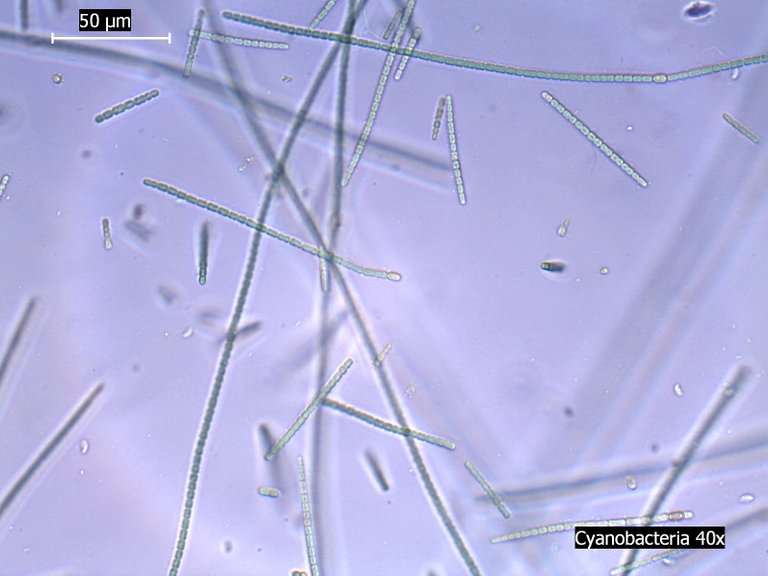The bacteria
Version française : Steemit | Busy
This is them! First inhabitants of Earth, first to experiment life. Respect for these tiny beasts so!

But what is it? We often hear them in news as responsible for infections or sickness. As the Lactalis scandal with the contaminated milk by a Salmonella.
Their size
Bacteria size is between 0.5 and 5µm so they are very small organisms, nearly the cell size… In fact, except exception, a bacterium is only a cell (unicellular organism).

Nocardia culture take with my phone
But then if they measure less than 5µm, how do you can take a photo of them? Well, bacteria can live in colonies, each “small canelé” that you see on the photo is a colony composed of thousands of bacteria.
Their quantity
Bacteria are everywhere, in all kind of environments (ocean, on a rock, in the soil, on roots, inside the digestive tube, …). By the way, you have them everywhere on your body, it’s them they make you stink or help you to digest food.
Being small beasts, they are numerous (without automatically colonies formation), if you want a magnitude scale there are more bacteria in your mouth than humans on Earth!

Don’t worry, it’s normal, we live with them from time immemorial.
Their shape
Shape diversity is relatively rich, but they are generally round (cocci) or stick shape (bacilli).

Source: https://fr.wikipedia.org/wiki/Bact%C3%A9rie
That is when you look bacteria with a microscope (bacilli first and then filamentous, magnified by 400 or 1000).


Source : https://nuage1962.wordpress.com/2017/11/30/une-trange-bactrie-dcouverte-sur-liss/ | https://commons.wikimedia.org/wiki/File:Cyanobacteria_Under_Light_Microscope_40x_Mag.jpg
And how they can work with only one cell? In fact, being organisms, which colonizing every environment, they have a big diversity of machinery. I’m going to take advantage to define some terms.

Are they produce their food, or they eat that of others? We talk about autotroph and heterotroph respectively.
Trophê (food), heteros (other) and autos (autonomous in Greek).
Among the autotroph, there is the bacteria which use sun energy (phototroph) and those using chemical elements, especially sulfur (chemotroph).
In heterotroph, there are the bacteria which feed by harvesting food on living, dead organisms and also on organisms’ residues like dead leaves.
Bacteria which using sun? I thought that it’s was plants which have invented that!
Good remark! Well, let’s say that plants did a bit of industrial espionage, I will explain to you that when we will talk about plants apparition.
But what proves us that they are living organisms? What defines a living thing? Good question! It’s the next subject!
What this Dr.Plantes want me?
References :
http://www.lefigaro.fr/conjoncture/2018/02/02/20002-20180202ARTFIG00330-le-scandale-lactalis-chronologie-d-une-crise-commencee-en-2005.php
https://fr.wikipedia.org/wiki/Bact%C3%A9rie
https://fr.wikipedia.org/wiki/H%C3%A9t%C3%A9rotrophie
https://fr.wikipedia.org/wiki/Autotrophie
Your questions are welcome!
This is a great reminder of what bacteria are, i must also say that their microscopic size has helped in their usage in nanotechnology, esp the Escherichia coli
Yes, there are so many utilizations of bacteria in science:
But I would talk more of biotechnology than nanotechnology.
Congratulations! Your post has been upvoted by Reach Out, which is proudly sponsored by @eturnerx. Our goal is to support Nigerian minnows on Steemit. Join our discord group https://discord.gg/NWAkKfn